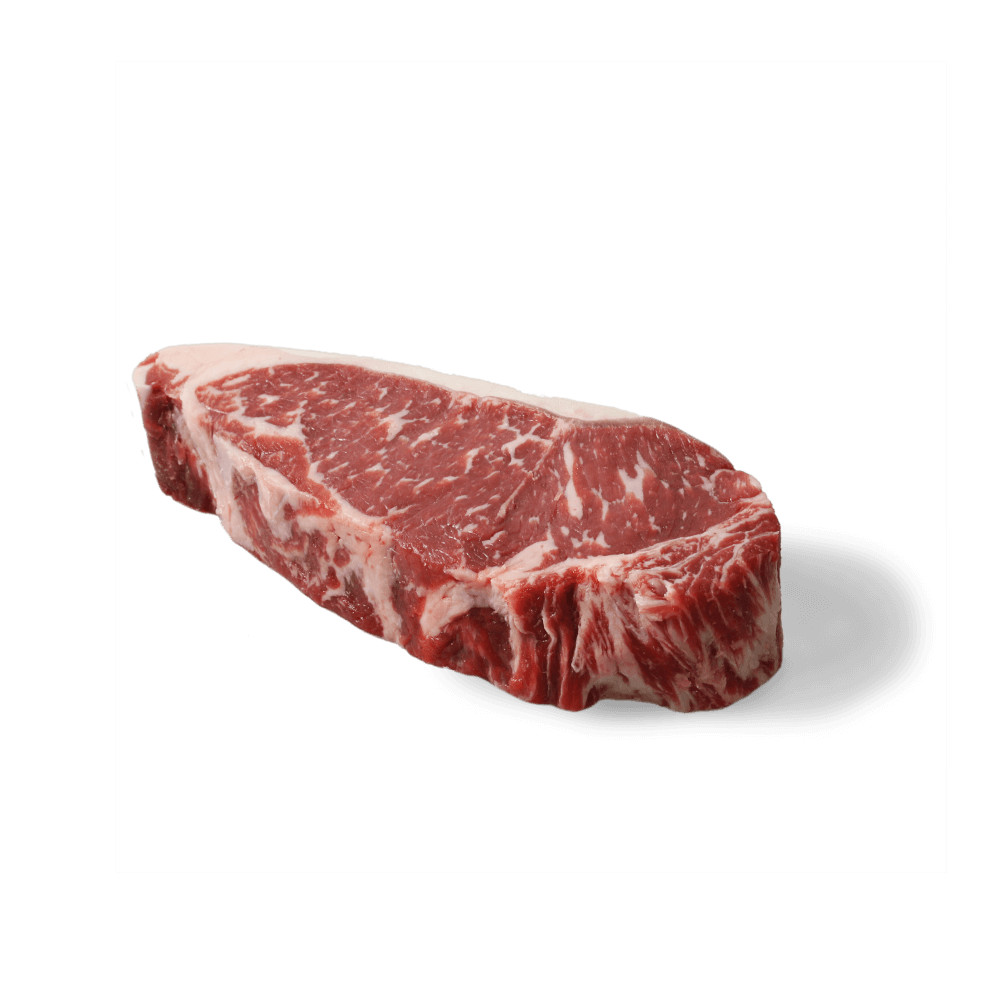 USDA PRIME
USDA PRIME
These New York Strip Steaks are graded USDA Prime, the top tier of quality in the U.S. On average, about 9% of graded cattle will achieve Prime status, but taking things a step further, we inspect each primal that moves through our facility to guarantee quality. If we don’t think a piece deserves the Prime grade, we won’t ship it.
 HOLSTEIN CATTLE
HOLSTEIN CATTLE
Our New York Strip Steaks are cut from Holstein cattle, raised in California predominantly in the Southeast corner of the state. The size (diameter) of Holstein steaks will be smaller than the Angus, which will allow for a thicker steak.
 SHIP FRESH
SHIP FRESH
We cut these steaks fresh the day we ship out, and once they are received they are good for 4-5 days in your refrigerator, or 6-7 months in the freezer.
 DRY AGED
DRY AGED
Before these were processed into steaks, these New York Strips were dry aged for 30-35 days.
The dry aged New York Strip Steak is probably the most popular of all the steaks and for understandable reasons. It delivers an extremely tender cut with very good flavor that can stand completely on its own with just salt and pepper. It delivers this with virtually no internal bits of fat (not to be confused with marbling, which it has in abundance). In fact, all the fat runs along one side and for those who wish to avoid it altogether have no difficulty whatsoever removing it.
The New York Strip Steak is cut from the loin, which for those of you crazy enough to try to ride one of these critters, is where you’d put the saddle. The New York comes in many different forms and names; when cut boneless, it’s called New York, New York Strip, Strip Sirloin, Striploin, and primarily in the New York City area: the Shell Steak.
Its various manifestations include boneless New York, bone-in New York Strip (also called a Kansas City Strip), T-Bone, and as the predominant steak in the Porterhouse. In the Porterhouse, it teams up with the Filet Mignon, while in the T-Bone it teams up with the bone (which is one reason I’m not a big fan of the T-Bone).
One end of the Strip abuts the Prime Rib (where you’ll find the Ribeye Steaks); literally the width of a knife separates the two cuts, and the other end will transition into the Top Sirloin or Chateaubriand. The end at the Chateaubriand is visually the less attractive of the two ends but is actually the more tender by nature; although we may be splitting hairs here, because the difference is indeed subtle when dry aged and would only be noticeable if the two cuts were tasted side by side.
For those of you who like to add a modern twist to classic cuts, a less common way to use the New York is to have it cut double thick (20 oz), and then serve it in slices as you would a Chateaubriand.
![]() USDA PRIME
USDA PRIME![]() SHIP FRESH
SHIP FRESH

